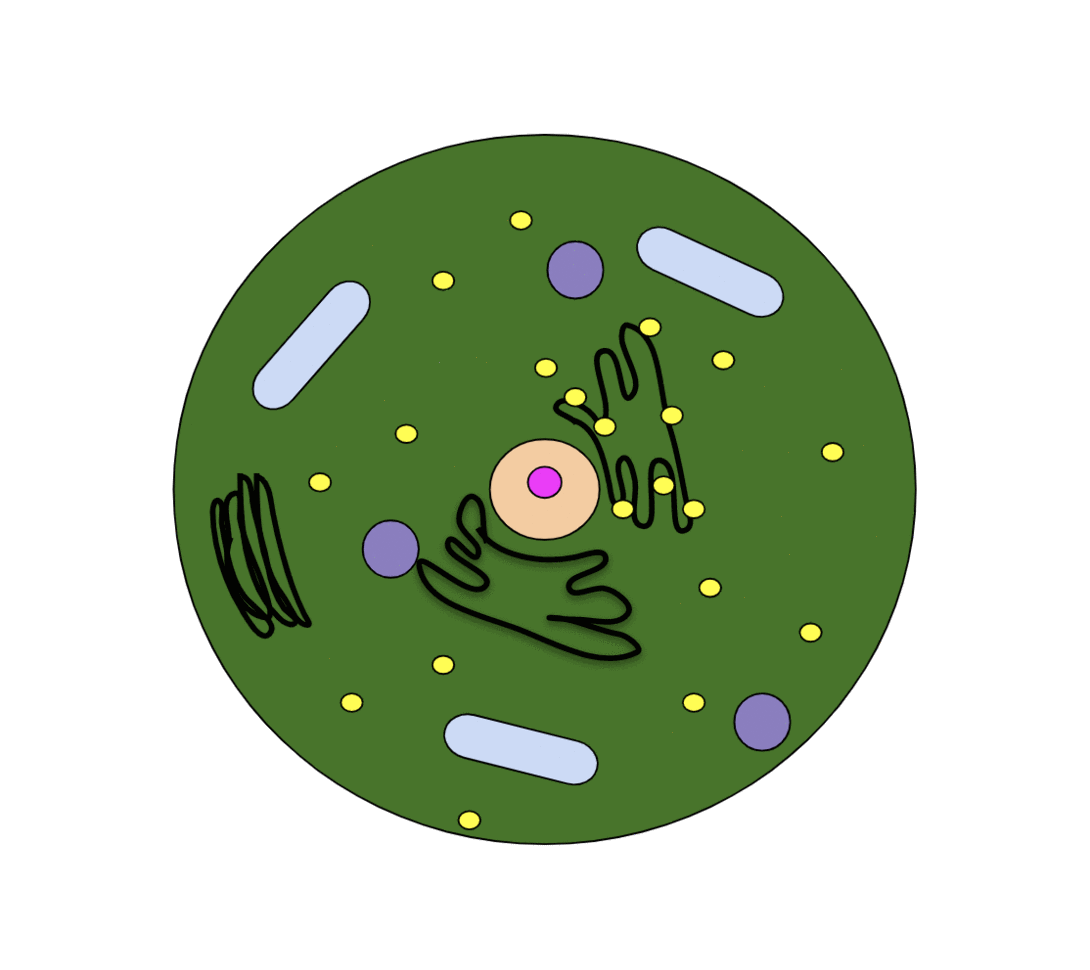Cellular Injury and Cellular Damage
After discussing cellular adaptation in my last post, today, I will be doing Cellular injury in today's post. Let's get to it without any delay.
Cellular injury occurs as a result of a greater stress level compared to the adaptation level of the cell (threshold). These injury can be of different ranges depending on the type of Cells affected, the type of stress, and the severity of the stress. These cellular injuries can be caused by hypoxia, inflammation, genetic mutation, malnourishment, and trauma.

Wikimedia Gif
Hypoxia which is referred to as the inadequate supply of oxygen to a particular tissue in the body. Hypoxia occurs at the tissue level while Hypoxemia is low oxygen in the arteries, so If we are to define hypoxia simply, it is low oxygen delivery to tissues in the body. Oxygen is very important in tissues, as it is the final electron accepter in the electron transport chain to generate ATP or Energy. Hypoxia can be caused by three factors, and they include Ischemia, Hypoxemia, and Decreased Oxygen Capacity.
Ischemia is a condition where there is insufficient blood flow into tissues. The tissue in the body needs blood and if a tissue doesn't get enough blood which also will lead to reduction in oxygen supplied, then the tissue will die. This can be caused through a few mechanisms which includes decrease of blood going into an organ through arterial blockage, venous blockage thereby preventing enough blood from leaving the tissue leading to lack of oxygen as new oxygenated blood isn't going to the tissue. Finally shock is another reason to have ischemia, since there is a generalized decrease profusion of the organs in the body, and this will lead to ischemia in different organs and tissues. Ischemia can occur in an embolic event such as a heart attack thereby causing a reduction in blood flow to every organ and tissue. Also having Embolus which will lead to a thrombus which can lead to blockage of bloods to organs. Another way in which Ischemia can occur is as a result of trauma leading to a damage of the artery which would lead to a clot, preventing blood from going to necessary tissues, as well as blood loss.
Hypoxemia is another cause of hypoxia and it is a condition where there is generally low level of oxygen in the blood. Patients with hypoxemia have low partial pressure of oxygen. When the body takes oxygen, it goes to the lungs, then to the alveolar where it goes to the blood and bind with hemoglobin. With partial pressure of oxygen, PAO2 is less than 60mmHg, and Saturation of oxygen SaO2 less than 90%. Hypoxemia can be caused through certain factors such as staying in high altitude leading to a decreased fractional pressure of Oxygen in the atmosphere which will lead to les oxygen in the blood. Carbon dioxide build-up leading to low oxygen in the blood, and Interstitial lung disease, leading to reduced PaO2 which leads to low blood in the blood.
Decreased Oxygen Carrying Capacity is another cause of hypoxia, and we know that Oxygen is carried in the blood via hemoglobin. Each Hemoglobin carries 4 oxygen molecule but then there is a decrease in the carrying capacity when there is a difficulty with hemoglobin binding with oxygen, or its binding capacity. When patient has Anemia, they will not be able to carry enough oxygen, as a result of decreased red blood cell which means a decreased hemoglobin which will mea a decrease in oxygen carrying capacity of the patient leading to hypoxia. presence in area with Carbon monoxide is another factor that can can decrease the oxygen carrying capacity of hemoglobin as CO can bind with hemoglobin displacing oxygen from binding. This is known as carbon monoxide poisoning, and these leads to decreased Saturation of oxygen in the body. Another cause of decreased oxygen carrying capacity is Methemoglobinemia where Fe2+ is oxidized to Fe3+ leading to a decrease in the saturation of oxygen, and this occurs due to oxidative stress as a result of using sulfa drugs, nitrates, and benzocaine.
A state of prolonged hypoxia, will lead to cellular damage. The lack of energy can cause different mechanisms of cellular damage, and they include the blockade of Na+/K+ pump, thereby preventing sodium from leaving the cell increasing the osmolarity of the cell, increasing the liquid content in the cell leading to cellular swelling and bursting which causes cell death. Low ATP also blocks the Calcium pumps preventing calcium from leaving the cell leading to the excessive activation of enzymes which would lead to cellular damage. Also effect of lack of ATP in the cell will lead to activation of anaerobic glycolysis which would lead to a build up of lactic acid, lower pH, and causes cellular damage. Cell swelling is a major presentation of cell damage, but it is important to know that it is reversible, and when not reverse, it leads to membrane damage which is irreversible.
https://www.ncbi.nlm.nih.gov/pmc/articles/PMC5234199/
https://www.statpearls.com/ArticleLibrary/viewarticle/36622
https://step1.medbullets.com/respiratory/117020/oxygen-deprivation
https://step1.medbullets.com/pathology/106028/cell-injury
https://www.lecturio.com/concepts/cell-injury-and-death/

Thanks for your contribution to the STEMsocial community. Feel free to join us on discord to get to know the rest of us!
Please consider delegating to the @stemsocial account (85% of the curation rewards are returned).
Thanks for including @stemsocial as a beneficiary, which gives you stronger support.